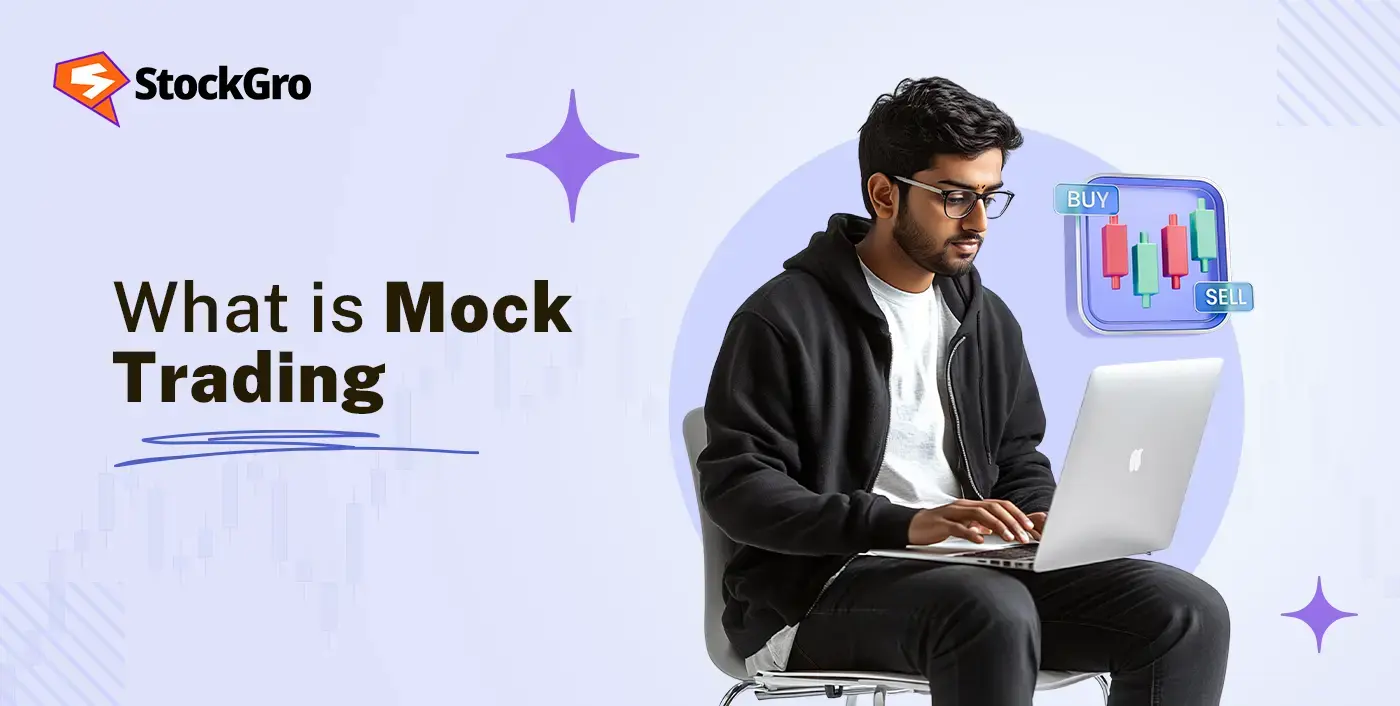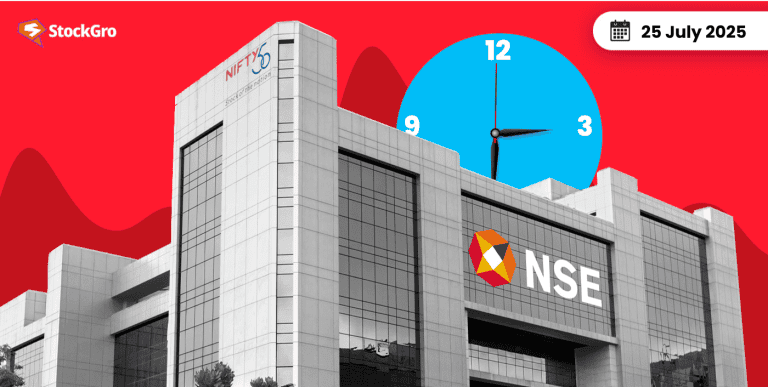
Every trade begins with a plan, and the two main components of that plan are: the stop loss and target. Think of them as your finish line and your safety net. One establishes your expected gain, while the other helps limit possible losses. When combined, they give trading decisions structure. We will go into specifics about what they mean, why they are important, and how to clearly define them in this blog. It’s time to get started!
What is a Stop Loss in Trading?
A stop loss is an instruction given to a brokerage to automatically execute a trade on an asset once its price hits a certain price. Its primary purpose is to cap the downside risk an investor is exposed to on any single trade. Upon hitting the trigger price, the stop-loss order converts into a market order.
What is a Target Price in Trading?
A target price in trading represents the anticipated price level at which a trader expects to close a profitable position. It is the predetermined point where a trader aims to secure gains from a trade, based on their analysis of market conditions and asset valuation.
Why are Stop Loss and Target Important in Trading?
Stop loss and target orders are essential for disciplined trading. They help in:
- Risk management:
Stop loss orders help limit how much money you could lose on a trade if the price moves against you. This allows you to control losses and protect your trading capital during sudden market changes.
- Profit booking
Target orders is a pre-set order that will automatically liquidate your position as soon as it achieves a specified level of gain. This ensures that gains are locked in without waiting for ideal conditions, which may not always return.
- Emotional discipline
Using stop loss and target orders removes the need to make decisions in the heat of the moment. This helps avoid panic exits during dips or holding on too long in the hope of higher profits.
- Trade planning
Setting exit points in advance gives structure to your trades. You go in with a clear plan, knowing when to exit if things go well, and when to cut losses if they don’t.
- Capital protection
By limiting losses and securing gains, stop loss and target orders help protect your overall trading account from large drawdowns. This makes it easier to stay in the market for the long term.
How to Set a Stop Loss
A stop loss helps you decide when to exit a trade to avoid larger losses. There are several ways to set it:
- Fixed stop loss: A predetermined price level below the entry point.
- Trailing stop loss: Adjusts as the price of the asset moves in a favorable direction, locking in gains while still limiting downside risk.
- Percentage-based stop loss: In a percentage-based approach, the exit point for a trade is set by a fixed percentage drop from the initial purchase price. For example, a 5% stop loss means you exit if the price drops by 5%.
- Volatility-based stop loss: Uses market volatility, often measured by indicators like Average True Range (ATR), to set the stop loss wider in volatile markets and tighter in less volatile ones.
How to Set a Target Price
Setting a clear target price helps define where to exit a profitable trade. Here are some commonly used methods:
- Risk-reward ratio: Set a goal that offers a return at least twice the amount you’re willing to risk. For example, if your stop loss is ₹5 below entry, aim for ₹10 above it.
- Support and resistance levels: Identify support and resistance by analyzing historical price charts to find specific zones where significant buying or selling pressure has consistently emerged in the past.
- Using indicators for target setting: Technical indicators tools such as moving averages, fibonacci retracements, or pivot points can help identify potential reversal zones or strong price levels where profits could be taken.
Stop Loss and Target Setting Strategies
Traders use specific tools to set stop loss and target levels for better risk-reward control including:
- Using moving averages
Traders often place stop losses just below a key moving average, like the 20 or 50-period moving average, when the trend is upward. Target prices may be set near resistance levels highlighted by the same moving average, offering a structured exit plan.
- Using fibonacci levels
Fibonacci retracements and extensions are used by traders to forecast likely areas of price support or resistance. A stop loss might be placed just beyond a retracement level, while targets can align with projected extension levels from recent price swings.
- Using ATR (Average True Range)
The ATR indicator measures market volatility. Traders use it to set flexible stop losses, generally placing the stop a certain multiple of the ATR below the entry point so the trade has room to move without being closed by normal price noise.
Common Mistakes in Setting Stop Loss and Target
Even experienced traders sometimes set stop loss and target levels poorly, which affects trade outcomes.
- Stops set too tight: Normal price movements can trigger exits even when the trade is still valid.
- Setting stops too wide: Increases the potential loss on a trade, leading to unfavorable risk-reward ratios.
- Changing stops after entry: Often done out of fear or hope, leading to inconsistent results.
- Not having a target: Entering trades without a clear profit target can result in holding trades for too long or exiting too early.
- Ignoring volatility: Not adjusting stop loss based on market volatility can make them ineffective.
Advantages of Using Stop Loss and Target
Implementing stop loss and target orders offers several benefits to traders:
- Helps minimise large losses: A stop loss automatically exits the trade when prices move unfavorably, helping prevent a small loss from becoming a major one.
- Locks in gains at the right time: A predefined target ensures profits are captured once the price reaches your expected level, avoiding the risk of losing unrealised gains.
- Builds trading discipline: Having defined exit points reduces emotional reactions and promotes more consistent trading behavior.
- Helps plan risk and reward clearly: Setting both stop and target allows you to calculate if the trade is worth taking.
- Reduces need for constant monitoring: Once the levels are set, the system handles the exit, allowing traders to step away without missing execution.
Limitations of Using Stop Loss and Target
Despite their various benefits, stop loss and target orders also accompany certain limitations such as:
- Slippage can occur during fast-moving or volatile conditions, where orders get executed at worse prices than expected.
- Price may briefly touch the stop level and reverse, causing a loss even though the original direction was correct.
- In case of gap openings, especially after news or overnight events, orders may trigger far from the intended level.
- Stop loss orders do not guarantee execution at the exact set price, especially in illiquid markets.
- Repeated stop-outs can affect trader confidence, making it harder to stick to a plan.
Stop Loss vs Target Price: Key Differences
In the world of trading, managing risk and securing profits are paramount. A trader’s core toolkit for managing risk and reward consists of two essential orders: the stop-loss and the take-profit. While both tools are set before entering a trade, their roles are quite different.
By using a stop-loss order, you can effectively control your maximum financial loss on an investment. For example, if you buy a stock at ₹100 with a stop-loss set at ₹95, your trade will be automatically sold if the price falls to that level, limiting your loss.
A target price helps secure profits. If your target is ₹120, the trade closes when the stock hits that level, locking in a ₹20 profit.
The main difference is purpose, one controls risk, the other captures gains.
| Feature | Stop Loss | Target Price |
| Purpose | Limit potential losses | Realize profits |
| Trigger | Price drops to a set level | Price rises to a set level |
| Role | Risk management; capital protection | Profit booking; strategic exit |
| Emotion | Reduces fear of large losses | Prevents greed from eroding gains |
| Placement | Below entry price (for long positions) | Above entry price (for long positions) |
Tips to Improve Stop Loss and Target Setting
Discussed below are some practical intraday trading tips to improve stop loss and target price planning:
- Recognize that intraday positions must be closed by day’s end. Set targets and stops that allow for trade completion within market hours, rather than hoping for extended movements.
- Fix both stop loss and target prices before entering a trade. This pre-planning helps minimise emotional decisions during live market fluctuations.
- While methods like percentage-based stops are common, consider adjusting stop distances based on the asset’s current volatility. During times of high market volatility, it may be wise to set your stop-loss further from the entry price to avoid premature exits.
- After establishing your exit points for both loss and profit, stick to it. Avoid moving your stop loss further away due to hope, or shifting your target due to fear of missing out on more gains, which can undermine risk management.
Related Risk Management Tools
Beyond stop loss and target prices, many other tools can help with comprehensive risk management in trading:
- Position sizing: This decides the exact number of shares or contracts to trade based on your account size and the risk percentage per trade. It helps maintain a uniform amount of risk for every transaction, creating a standardized approach to capital protection.
- Risk-reward ratio: The risk-to-reward ratio is an important metric that weighs the potential loss to potential gain. Aiming for a favorable ratio (e.g., 1:3) allows for profitability even with a lower win rate.
- Trailing stops: A flexible type of exit order that follows the price as it moves in your favor, which secures profits while simultaneously guarding against a sudden market reversal.
- Take profit orders: Similar to a target price, these automatically close a position when a predetermined profit level is reached, securing gains without constant monitoring.
Conclusion
Stop loss and target levels are more than just price points, they guide trading discipline. Together, they define how much risk you’re willing to take and the reward you’re aiming for. Setting both in advance can reduce emotional reactions, improve decision-making, and bring more consistency to how trades are planned and executed.
FAQs
The best way to set a stop loss depends on the trader’s risk tolerance, trading style, and analysis methods. Many traders use a percentage-based approach, such as setting the stop loss at a certain percentage below the purchase price. Others use technical analysis, placing stop losses below support levels or recent price swings. The aim is to prevent significant losses while giving the trade enough room to move.
Traders use a combination of technical and fundamental analysis to set target prices. This may involve examining support and resistance levels, price patterns, or applying valuation metrics such as multiples of earnings. Factors considered include projected earnings, supply and demand, and market trends. Some traders base targets on chart patterns, while others rely on company financials and broader economic indicators.
A commonly accepted risk-reward ratio among traders is between 1:2 and 1:3. This means that for every unit of risk taken, the potential reward should be two or three times greater. Adhering to such ratios is considered helpful in ensuring long-term profitability, as even with occasional losses, higher rewards from winning trades can maintain positive results.
Using a stop loss is generally considered as a good risk management practice, especially for beginners, as it helps protect against large, unexpected losses and encourages disciplined trading. Setting a stop loss ensures exposure to risk is controlled according to individual comfort, making it a practical tool for those starting in trading or investing.
A fixed stop loss remains constant, while a trailing stop loss moves with market price, locking in profits as they accrue. Trailing stops offer more flexibility, particularly in volatile markets, by giving trades room to grow while still managing risk. However, one method is not universally better; suitability depends on market conditions and trading style.
Yes, both stop loss and target prices can be adjusted after initiating a trade. Traders often modify these levels based on evolving market conditions, new information, or changes in volatility. Regular review and adjustment can help align risk management strategies with the current market conditions for more effective trading outcomes.
A stop loss limits losses by selling or buying at a set price, while the trigger price is the level that activates this stop-loss order in the market.

